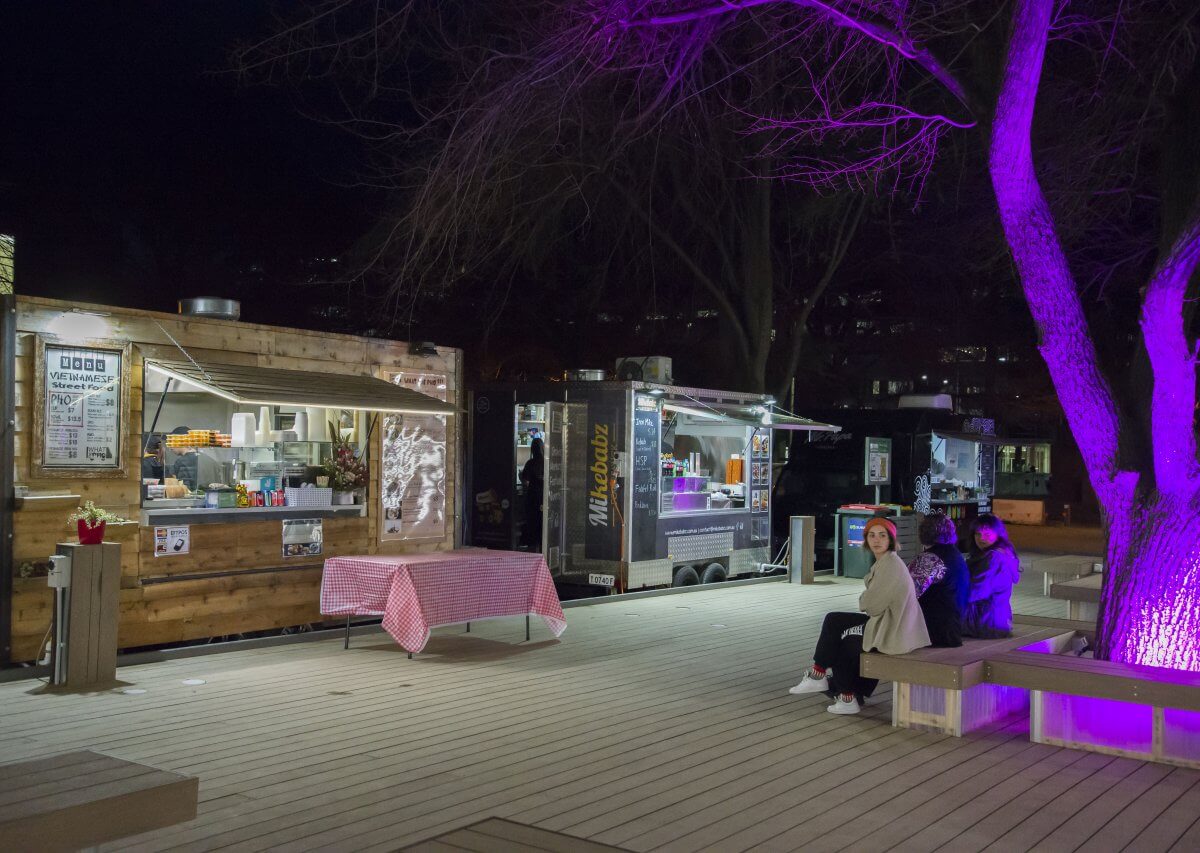When I first heard about the idea of the Pop-Up Village, it sent an anxious shiver down my spine. My experiences with temporary food spaces had only been dire, so the impromptu implications of its name made me uneasy.
It starkly reminded me of the time we had a temporary kitchen at my residential hall. They promised a completely functional dining experience: meals that would deliver on all nutritional metrics and would keep us mobile in the slow Winter months. Alas, dinner, for a whole six months, was an array of fried things which were never self-declaratory in their fried-ness. We were served fried beef – camouflaged as Crispy Spicy Mongolian Beef – and fried vegetables – masquerading as the delicately dubbed Tempura Greens.
I had an apprehension that a similar thing would happen in the Pop-Up Village. I suspected that they would promise a ‘Pop Up Village’ – its energetic name insinuating a glam and vibrant finish – but we would end up with something more along the lines of ‘Falling down, a bit dystopic, collection of trailers and maybe small dwellings.’
Despite those initial fears, I am very excited by the final product.
The Pop-Up Village, from a social perspective, offers an exciting new way to enjoy our campus. There is a combination of spaces which invite creative approaches to event management, and the long night hours of the vendors promise a re-energised student nightlife. While we mourn the loss of the late Union Court, the Pop-Up promises a new (brief) era of student life.
Cameron Allan
The Pop-Up Village has been branded as a hip temporary location to ensure campus life exists and thrives during the redevelopment of Union Court. As an events space, the Pop-Up village satisfies most of our needs with a late-night bar, a multi-purpose event space with a good AV system, a larger variety of food options, and an edgy aesthetic. But can it act as an alternative, albeit a temporary alternative, to Union Court? The answer is no for one simple reason: capacity.
Let’s run some numbers. The Pop-Up village has two primary locations. The outside deck, creatively called the Deck, and the Pop-Up Club. Together they have the capacity, based on licensing, of 1510 people. This is just less than 15 percent of the current ANU student population. This is not including ANU staff or casual visitors that may be tempted by the allure of food trucks, i.e. BrodBurger.
On the other hand, the Union Court precinct is huge. The Union building is licensed for 3,859+ people. The Manning Clark Theatres have 1,405 seats. The Union Court grass, though underutilised in winter, has a capacity even larger than both.
Though the Pop-Up is cool now, imagine it in the middle of the semester with hundreds of students trying to find a spot to eat, study, or just relax. Space which will be contested with most of the on-campus student-run, events, and even more organised by ANU. The Pop-Up village has 75 events already booked for the first few months of the semester and this number is growing.
The venue was never going to be a perfect replacement for the facilities of the Union Court precinct, but a very obvious lack of thought is going to make it that much more disappointing. And as a result, our university experience is going to suffer.
Kat Carrington
We acknowledge the Ngunnawal and Ngambri people, who are the Traditional Custodians of the land on which Woroni, Woroni Radio and Woroni TV are created, edited, published, printed and distributed. We pay our respects to Elders past and present. We acknowledge that the name Woroni was taken from the Wadi Wadi Nation without permission, and we are striving to do better for future reconciliation.
